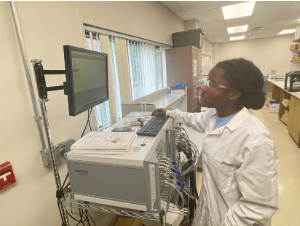Clean Energy
 The study of clean energy involves studying different technologies that utilize a cleaner and more sustainable form of energy. This can include solar, wind, hydro, geothermal, bio, etc. With the way our world is growing/expanding and using more resources, many forms of energy that we currently use are not a sustainable option in the long run. By switching to renewable energy sources, we will continue to maintain the same level of energy usage while protecting our environment from climate change.
The study of clean energy involves studying different technologies that utilize a cleaner and more sustainable form of energy. This can include solar, wind, hydro, geothermal, bio, etc. With the way our world is growing/expanding and using more resources, many forms of energy that we currently use are not a sustainable option in the long run. By switching to renewable energy sources, we will continue to maintain the same level of energy usage while protecting our environment from climate change.
Electrochemistry in fuel cells
Electrochemistry involves studying interaction between the electrical potential and identifiable chemical change on the electrodes. The electrochemical reactions that occur on the fuel cell electrodes build up the electromotive force across the fuel cell to generate electricity. Understanding the electrochemistry in fuel cells is essential for materials and electrode design, reducing the energy loss and extending the electrode durability.
Electrolyzers
Electrolyzers utilize clean electricity to generate fuels and value-added chemicals from CO2 and water. The electrolyzers are categorized into three different types, polymer electrolyte membrane (PEM), alkaline, and solid oxide based on the electrolyte applied. New material design and cell architecture development aim to improve the electrolysis efficiency and durability.
Batteries
Batteries are energy storage devices that store electrical power as chemical energy in the electrodes. The current state-of-the-art lithium-ion battery has to tackle energy density and cyclability issues. Solid state electrolyte allows the application of lithium metal while mitigate the lithium dendrite growth problem in liquid electrolyte. Besides improvements on lithium-ion, other battery architectures including Li-air, Al-CO2, Zn-air, and, Li-S are interested.
Electrochemical cells
Electrochemical cells are devices that can generate electrical energy from the chemical reactions occurring in it, including fuel cells, electrolyzers, batteries, sensors, etc.
Advanced energy materials
Advanced energy materials are used in all forms of energy harvesting, conversion, and storage. They include organic and inorganic photovoltaics, fuel cells, water, magnetocaloric, solar and thermosolar power, batteries and supercapacitors, thermoelectric, hydrogen, and piezoelectronics.
Power Electronics
Power electronics work on devising efficient, compact, and economical techniques that transform and regulate electrical energy between different forms. It utilizes electronics to control and convert electric power through static means. It works from the available input form into the desired electrical output form.
Fuels and combustion
Combustion is a high temperature, chemical process where a substance reacts with oxygen to give off heat. This substance is called fuel, which is in three different forms, solid, liquid, and gaseous. The source of oxygen is the oxidizer. The different types of fuels can be fired in boilers, furnaces, and other combustion equipment. The selection of the right type depends on various factors such as storage, handling, availability, pollution, and the cost. Knowledge of fuel properties aids with selecting the right fuel for the right purpose and efficient use.
Water and environment
Water and environment engineering revolves around water resource development and management. It also looks at yield analysis, flood hydrology, hydraulics, design of structures, as well as quality and treatment. Providing quality service and safe disposal systems requires thoughtful applications of technology.
Theory and Modeling
Theoretical understanding of non-equilibrium thermodynamics

Non-equilibrium thermodynamics relates to an absence and lack of balance within physical systems. It also extends to the flow of energy and matter through these systems that are not in equilibrium. The aim is to understand how the systems behave and how they can be manipulated, especially in electrochemical systems. Studying them involves exploring the transport processes and rates of chemical reactions. It is an emergent theory where its fundamental principles are due to properties of matter that are microscopic and mesoscopic to understanding the degradation behaviors in the electrochemical systems. Theoretical revolves around the study of nonequilibrium thermodynamics as a theory and subject area where experimental centers around the application of it.
TEA/LCA Analysis
TEA (Techno-Economic Analysis) is a method that evaluates the economic performance of a technology. It assesses the overall value, allowing for the chance to objectively weigh benefits against cost. It offers the chance to judge the practicality of projects based on an economic and technical basis. The process begins with a flow diagram that highlights major pieces of equipment and product flow. This leads to a mass balance which showcases major input, waste, and product/co-product flows.
LCA (Life-Cycle Assessment) evaluates the effects a product has on the environment throughout its life. This increases resource-use efficiency and decreases liabilities.